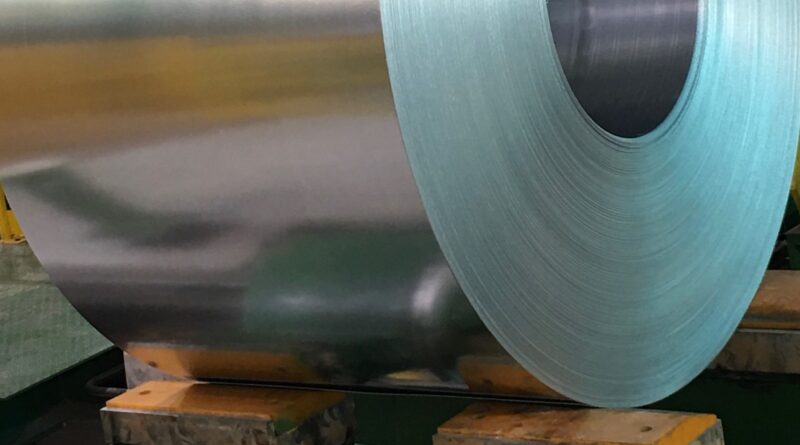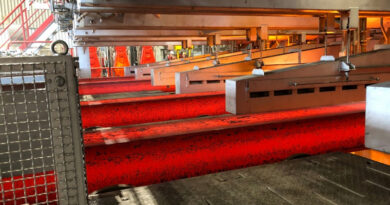US steel imports in 2021 surging by unprecedented 47%
Economy Rebounds from COVID – No one could have predicted when the virus crippled commerce in spring 2020 that the economy would flourish as it has in 2021, leading to record steel demand and record prices. Based on preliminary Census Bureau data, the American Iron and Steel Institute reported that the US imported a total of 3120000 net tons of steel in 2021, 47% up YoY.
A byproduct of the surging U.S. economy, bottlenecks in seaborne shipping, rail, and trucking have led to delayed deliveries of all types of goods, including steel. On the positive side, experts say, this could translate into pent-up demand in 2022.
The steel industry continued to consolidate at both the mill and distributor levels as mergers and acquisitions activity heated up. Notable deals included Cleveland-Cliffs’ $775 million purchase of Ferrous Processing and Trading, which made a big splash in the ferrous scrap market. Another example is Reliance Steel & Aluminum’s acquisition of Merfish United, which expanded the giant service center’s reach into the tubular products market, not only in steel but also in copper and plastics.
Ominous warnings of global warming and its potentially disastrous effects on the environment finally appear to be gaining some political ground. Steel mills, long considered notorious polluters, are now among the many corporate voices touting ambitious goals to reduce carbon emissions from their operations, not only for altruistic purposes but also because customers now demand it. Based on news reports from COP26, the UN Climate Conference just held in Scotland, the challenges ahead to save the planet remain daunting, but international cooperation has never been stronger.
Next to construction, automotive is the biggest market for steel. A global shortage of the microchips that are essential to vehicle electronics caused plant shutdowns and production delays amounting to lost sales of some 2 million cars and trucks this year. As a result, there’s an oversupply of automotive-grade steels that could end up on the market, adding downward pressure to steel prices. But once carmakers get the chips they need, production and sales are expected to skyrocket, including surging demand for the new generation of electric vehicles. There is one big caveat: This is all assuming additional parts or material shortages don’t crop up.
Ever since President Donald Trump imposed Section 232 tariffs on steel and aluminum imports back in 2018 on debatable “national security grounds,” they have been a source of resentment among trading partners, friend and foe alike. The 25% tariff on steel and 10% tariff on aluminum, however, did reduce competition from foreign suppliers and cleared the way for domestic mills to raise prices to record levels. Trade negotiations have resulted in the removal or modification of Section 232 on several nations and regions, notably Canada, Mexico, and most recently the EU. But the duties remain in place on many big steel-producing nations, such as Russia and Japan. And quotas remain in effect on imports from Brazil and South Korea.
Steel prices in the U.S. rose to such high levels this year that foreign mills could afford to pay the 25% tariffs and still make money. U.S. prices have ranged from $400/ton to $800/ton higher than foreign steel, depending on the product and country of origin. Steel imports jumped by about 37% through the first 10 months of the year. Yet demand has been so strong that domestic prices didn’t really begin to respond to the competition from offshore until the fourth quarter.
Virtually all the publicly held companies in the steel industry reported record sales and profits this year because of the historically high steel prices. To their credit, most have announced plans to reinvest the windfall in new and upgraded production facilities. The list of projects is too long to detail here, but the investment is expected to result in an estimated 23 million tons of steelmaking capacity in North America, offset somewhat by idlings and closures of older mills.
After months of debate and political infighting, US Congress was finally able to pass long-needed infrastructure funding that stands to be a boon for the steel industry. The measure includes funding for about $850 million in steel-intensive projects that will upgrade the nation’s roads, bridges, rail, ports, and electrical grid. That equates to as much as 40 million to 45 million tons of new steel demand over the life of those projects, according to industry estimates.
Observers can debate the order of the ranking above, but no one will dispute that steel prices have dominated the headlines in 2021. Fueled by trillions in government stimulus to keep the economy from succumbing to the fallout from COVID, steel demand far exceeded supply for most of the year. The benchmark price for hot-rolled steel quadrupled, from less than $500/ton to a peak of $1,955/ton, in a September-to-September comparison. Steel prices are likely to be the top story again in 2022 as the market waits anxiously for an expected correction.




